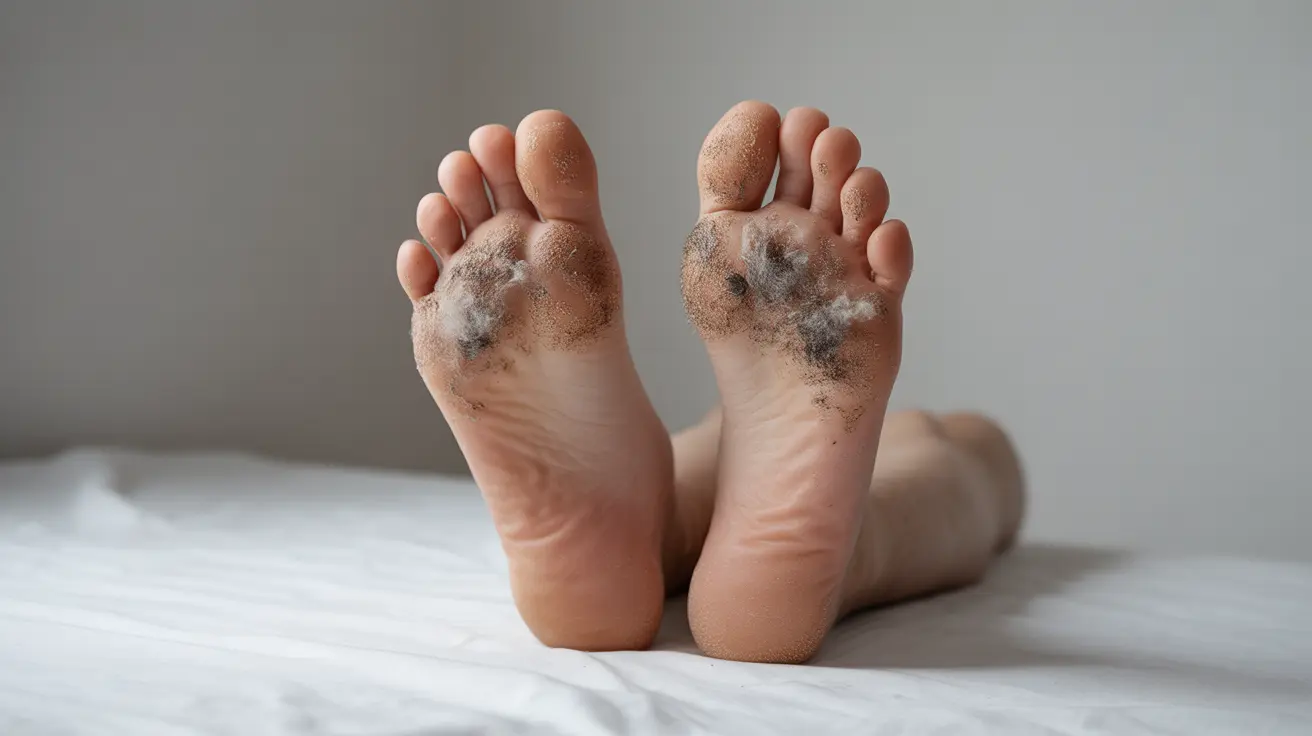Toe jam is a common but often misunderstood foot condition that affects many people. This accumulation of debris between the toes can be more than just an unpleasant nuisance – it can potentially lead to skin problems and infections if left unaddressed. Understanding what causes toe jam and how to prevent it is essential for maintaining proper foot health.
In this comprehensive guide, we'll explore the causes, symptoms, and prevention strategies for toe jam, helping you maintain better foot hygiene and avoid potential complications.
What Is Toe Jam and What Causes It?
Toe jam isn't actually jam at all – it's a collection of dead skin cells, sweat, sock lint, and other debris that accumulates between the toes. This buildup occurs naturally but can become problematic when proper foot hygiene isn't maintained. Several factors contribute to its formation:
- Excessive sweating
- Poor ventilation in shoes
- Inadequate foot washing
- Wearing shoes without socks
- Not drying feet thoroughly after bathing
Common Signs and Symptoms
Recognizing the signs of toe jam is the first step in addressing the issue. Common indicators include:
- Dark or gray substance between toes
- Soft, paste-like material
- Unpleasant odor
- Itching or discomfort
- Skin irritation between toes
The Role of Sweat and Footwear
Your choice of footwear plays a crucial role in the development of toe jam. Shoes that don't breathe well create a warm, moist environment where bacteria can thrive. This environment, combined with natural foot perspiration, creates ideal conditions for toe jam formation.
How Different Shoes Affect Toe Jam
Various types of footwear can impact toe jam development differently:
- Athletic shoes: Can trap moisture if not properly ventilated
- Plastic or rubber shoes: May increase sweating
- Breathable shoes: Help reduce moisture buildup
- Proper-fitting shoes: Minimize friction and debris accumulation
Prevention and Treatment Strategies
Preventing toe jam requires consistent attention to foot hygiene and proper footwear choices. Here are essential prevention steps:
Daily Care Routine
- Wash feet thoroughly daily
- Dry completely between toes
- Change socks regularly
- Use moisture-wicking socks
- Choose breathable footwear
Treatment Options
When toe jam does occur, several treatment approaches can help:
- Gentle cleaning between toes with mild soap
- Using antifungal powder if needed
- Applying moisturizer to prevent dry skin
- Regular exfoliation of dead skin
- Using antibacterial soap if infection is present
When to Seek Medical Attention
While toe jam is usually harmless, certain situations warrant professional medical attention:
- Persistent skin irritation
- Signs of infection
- Unusual discharge or bleeding
- Severe odor that doesn't improve with hygiene
- Development of athlete's foot or other fungal infections
Frequently Asked Questions
What causes toe jam and how can I prevent it from forming between my toes? Toe jam is caused by accumulation of dead skin cells, sweat, and debris between toes. Prevention includes daily foot washing, thorough drying between toes, wearing moisture-wicking socks, and choosing breathable footwear.
What are the common symptoms of toe jam and when should I see a doctor? Common symptoms include dark material between toes, unpleasant odor, and skin irritation. See a doctor if you notice signs of infection, persistent irritation, or unusual discharge.
How do sweat, footwear, and hygiene habits contribute to the development of toe jam? Excessive sweating, poor-ventilating footwear, and inadequate hygiene create an environment where toe jam thrives. Proper foot care, breathable shoes, and regular sock changes help prevent buildup.
Can toe jam lead to infections like athlete's foot or other health complications? Yes, untreated toe jam can create conditions favorable for fungal infections like athlete's foot or bacterial infections, especially if proper hygiene isn't maintained.
What are the most effective treatments and daily care steps to get rid of and avoid toe jam? Effective treatment includes daily washing and thorough drying between toes, using antifungal products when needed, regular sock changes, and wearing breathable footwear. Maintaining consistent foot hygiene is key to prevention.




